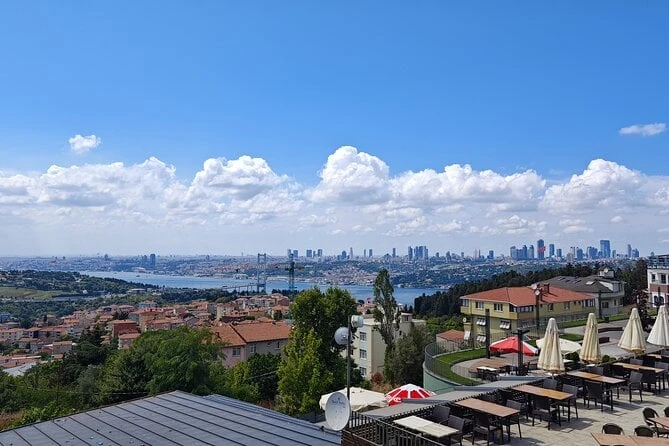Ephesus is an ancient city, located at the Aegean shore of Turkey, just close to Selçuk. It used to be one of the most powerful and influential cities in the ancient world. It is now known for its well-preserved ruins, which give a hint of the wealth of history.It was an important cultural, religious, and commercial center during Roman times, and it boasts the Temple of Artemis, one of the Seven Wonders of the Ancient World, the Library of Celsus, and the Grand Theatre. Nowadays, it is the UNESCO World Heritage Site and the most visited archaeological site in Turkey. The site is attracted by its outstandingly preserved ruins, ancient streets, and amazing significance in history.
The significance historical of Ephesus
Ephesus was a significant flourishing center of ancient culture, religion, politics, and economy. It is a legacy that continues to affect the modern interpretation of ancient civilizations. It is one of the principal archaeological sites in Turkey and the world. There are many Turkey packages that cover guided tours of Ephesus as well as other fabulous places in Turkey. So if one wants to explore Ephesus and other iconic destinations, Turkey packages that offer tours through the rich history, beautiful landscapes, and vibrant culture of the country. Some of these packages highlight its historical importance:
Community and Religious Center: Ephesus was a major center of culture, but the religious capital was worshipped by Artemis. The temple to Artemis became one of the Seven Wonders of the Ancient World. It spoke volumes about its religious and architectural significance. It comprised a community that was affluent and diverse.
Roman Empire Advantage: Ephesus was an important commercial port and center of trade in the Roman Empire. From this site stemmed the direct occupation and routes of trade, created pathways for exchange of goods and ideas, as well as cultures, thus forming what was thought to be one of the wealthiest cities in the Roman world. That is the Celsus Library and the Great Theater, which are prominent examples of Roman architecture in Ephesus.
Political Importance: Ephesus was by and large the capital of Roman Asia and was mainly an important center for administration and politics. The city's strategic location along with a well-developed infrastructure thus enabled the city to preserve prominence within the empire. The city was also a major player in Roman provincial politics and government.
Early Christian History: In early Christian history, Ephesus represents the place where Saint Paul preached, and the Church of Ephesus was built. It is said that here the Gospel of John was written, and apostle John lived the last years of his life in this city. Nearby is the Cave of the Virgin Mary, a site of pilgrimage where it is believed that Mary spent her final years.
Archaeological Treasure: The ruins of Ephesus today are possibly the best preserved of all ancient cities in the world. The magnificent monuments of its buildings—the Library of Celsus, Temple of Hadrian, and Terrace Houses—tell something about the ancient city in terms of planning, architecture, and daily activities. They render Ephesus hugely a UNESCO World Heritage site and a great archaeological treasure.
Economical Power: It was extremely important in ancient times as a port city with a clear location that was made for itself along with the Aegean Sea. Its import and export port was vital for trade as it linked the city with other regions of the Mediterranean. The income from trade eventually enabled the construction of monumental architecture and civil amenities.
The Top Attraction in Ephesus, Turkey:
The Temple of Artemis:
temple to the goddess Artemis, one of the Seven Wonders of the Ancient World. Only a few remaining ruins testify to what was once one of the largest, if not the largest and most magnificent, temples in the ancient world.
Library of Celsus:
The most beautiful structure dedicated to the Roman senator Celsus, the Library of Celsus was once one of the largest libraries of the Roman Empire. The facade of the building comprises intricate columns and statues and is one of the most photographed spots in Ephesus.
Great Theatre:
This colossal ancient theatre could have seated 25,000 people for remarkable performances, gladiatorial contests, and even political gatherings. It has astounding acoustics and covers a great view of the entire area.
Temple of Hadrian:
This temple dedicated to the Roman Emperor Hadrian is well preserved and has intricate carvings and inscriptions. The grand entrance and ornate structure show the architectural capabilities of the time.
The Odeon:
The smaller of the two theatres, but just as wonderful. It was used for musical performances and political meetings. It is famed for its excellent acoustics and seating.
Curetes Street:
The main street of Ephesus, lined with impressive marble colonnades, statues, and remains of public buildings. This line constituted the shortest path that linked two most important locations of Ephesus: the Temple of Artemis and the Library of Celsus.
Terrace Houses:
Home to the city's elite, these wonderfully preserved ruins are rich with mosaics, frescoes, and advanced plumbing systems, providing glimpses into the rich lifestyles enjoyed by the wealthy in Ephesus.
The Arcadian Way:
The major entrance road from the port to the city center was lined with columns and statues and was certainly an important trade and visiting route.
Ephesus has become a remarkable witness to the grand past of ancient civilizations, through which a fascinating glimpse into the past life of a community in culture, worship, and political activity can be observed. Most of the structures, such as the Temple of Artemis, Library of Celsus, and Great Theatre, are well preserved, and still, they do attract visitors and historians alike. Ephesus was both a center of commerce as well as religion. It turned into an early trademark of Christianity and a key place in the transformation of the whole ancient world. Today also, it is one of the archaeological sites that draw crowds in Turkey and let them feel and experience the richness of its historical past and enjoy its legacy. A Turkey day tour often includes a visit to Ephesus, allowing visitors to discover this ancient marvel and experience the wider cultural and historical richness of Turkey in one unforgettable journey.



-webp.webp)
-webp.webp)

-webp.webp)



